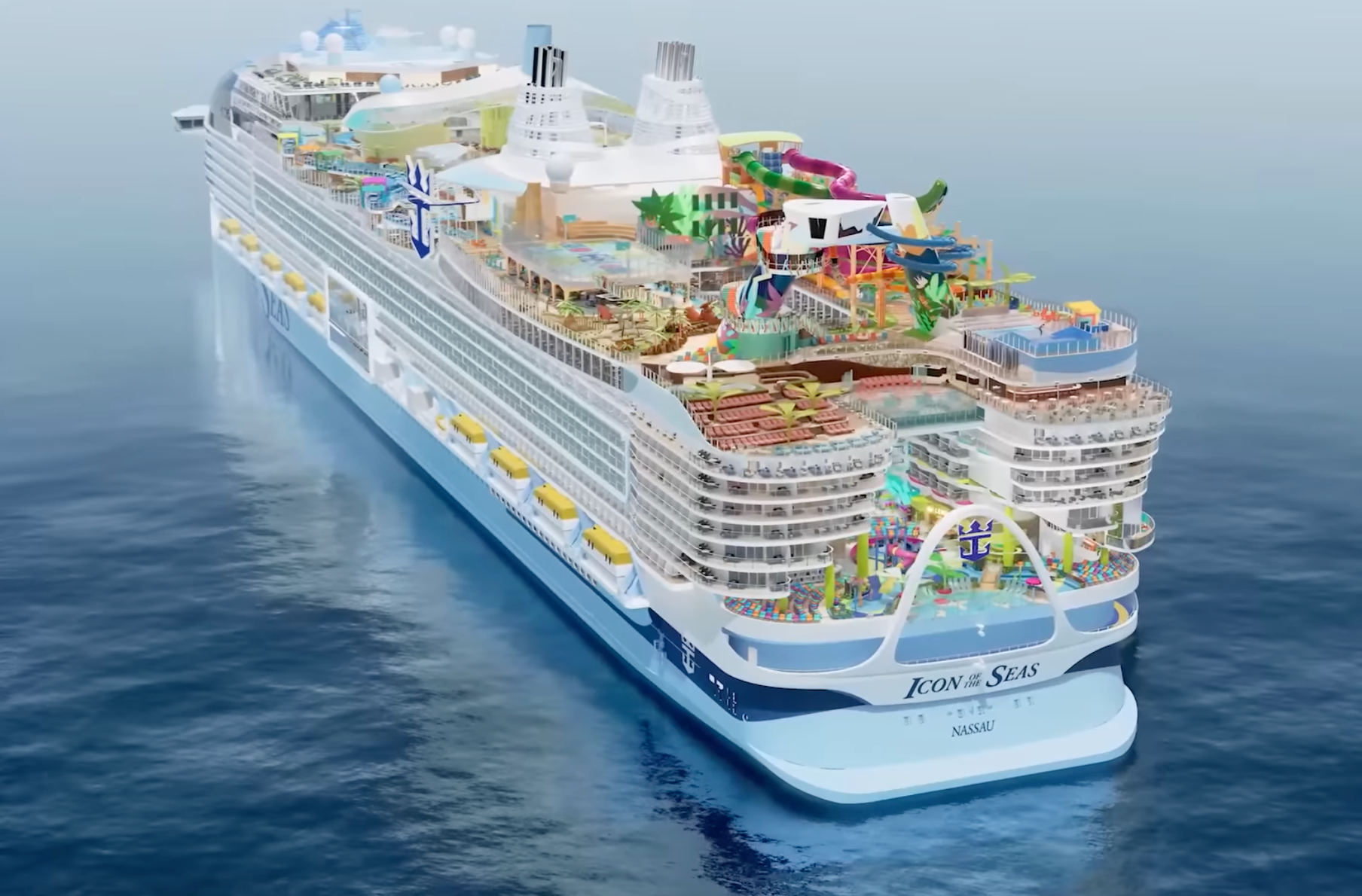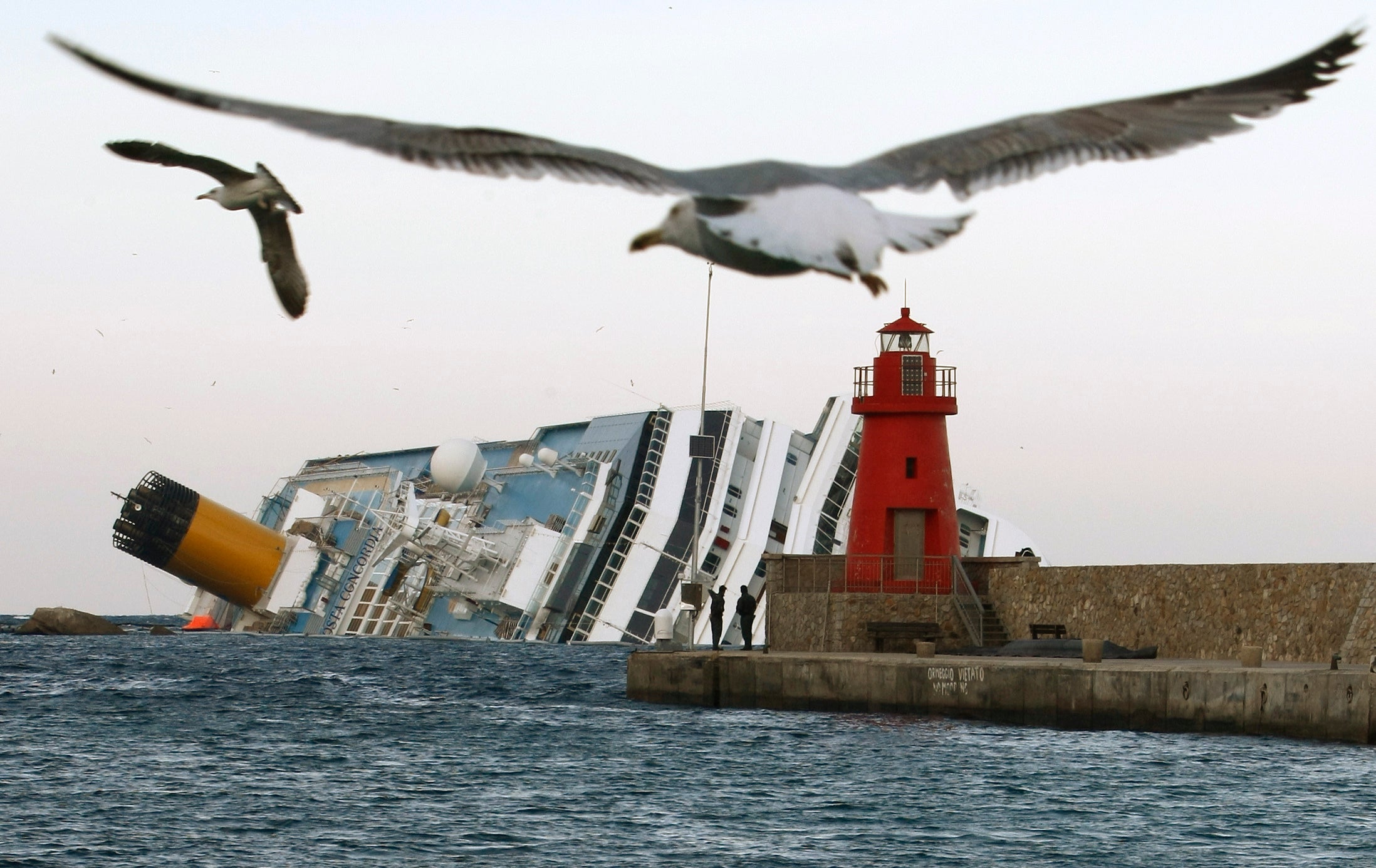‘You’re going to need a bigger boat’: Inside (and onboard) the unstoppable trend of monster cruise ships
With the launch of the latest controversial mega-ship, the cruise industry clearly didn’t get the memo that bigger isn’t always better – maybe it’s time for a sea change, writes Jamie Lafferty

It’s thrills you never dared to imagine, and next-level chill you never dreamed possible”; so claims some grammatically questionable blurb on the Icon of the Seas homepage, while computer-generated video of the vast ship loops in the background.
Looking like a rainbow that’s crash-landed on a toppled skyscraper, the Royal Caribbean ship will be the largest cruise vessel ever to take to the sea when it launches next year. It will have 20 decks and twice as many bars and restaurants. There will be seven swimming pools, six water slides, mini-golf, duelling pianos, a surf simulator, an ice rink, dancing fountains and, fairly crucially, a labyrinthine sewage system capable of dealing with the waste of almost 10,000 people. For all its hulking size, it is hard to see where they have left room for “next-level chill”.
At 1,198 feet long, the Icon will be one of the largest vessels in history, ranking behind only a handful of industrial transporters and oil tankers on the list of the world’s most massive ships. If the Titanic is a useful unit of measurement for you, then know that it is five times the size of that doomed ancestor. Maximum capacity – which is rarely expected to be reached – will be 7,600 passengers, around double the number of the ill-fated Costa Concordia, thanks to seven more decks (and hopefully much better luck).

That Italian ship serves as a more recent reminder than the Titanic that simply being colossal is no guarantee of smooth sailing. In 2012, the Costa Concordia, under the command of the fatally incompetent Captain Francesco Schettino, ran aground and then sank off the Tuscan coast with 3,200 passengers and more than 1,000 crew on board. Though the majority were successfully rescued from the wreck, 33 lives were still lost.
In the aftermath, it took two months to get the fuel off, and two-and-a-half years before the ship could be towed away for scrapping. That process didn’t finish until July 2017 – five years after it hit the rocks and one year after the first plans for the Icon of the Seas had been drawn up. The costs of Captain Schettino’s carelessness were thought to total around €2bn. This incident did little to slow the mega-ship industry, however. And nor did Covid, even as the disease jumped from deck to deck on vessels across the world.
After the general cessation of global travel, the cruise industry – thought to be worth around £15bn globally – has come roaring back. Those kinds of finances meant it was never likely to pack up and go away completely, but even by the increasingly ludicrous standards of mega-cruising, Icon of the Seas represents something new, especially gargantuan, and potentially dangerous.
‘Icon of the Seas’ represents something new, especially gargantuan, and potentially dangerous
With its record number of passengers, safety will be more important and complicated than ever. Consider the worst-case scenario: a ship of this size going down in cold water. Earlier this year, I spoke with Captain Stanislas Devorsine, an expert ice captain with more than a decade of experience in frozen seas, mostly accumulated resupplying Antarctic bases for the French Polar Institute. These days he pilots Ponant’s luxury icebreaker, Le Commandant Charcot, which with a capacity of just 270 passengers would look like a tugboat next to the Icon of the Seas. One of the world’s most ice-capable ships has little to fear, even in the notorious waters surrounding Antarctica, and when I spoke to him the captain didn’t seem worried about his ship or his passengers. That didn’t mean he had no concerns, however.
“The problem is when you look at CruiseMapper and you see so many ships,” he said, puffing out his cheeks. “Look at this one – so huge.” He isolated a vessel sailing off the Antarctic Peninsula, an enormous thing carrying 2,500 passengers. Like all cruise ships, it would legally have had enough lifeboats to evacuate all its passengers and crew, but a doomsday scenario would have that happening in a storm, in deadly cold polar water. The abandoning of the ship would have to be flawless and, even then, with no coastguard, an unlikely armada of much smaller cruise ships would have to coordinate in a way never seen before to rescue those who’d made it onto lifeboats.
“In the long term it won’t work,” said Captain Devorsine with a frown. “I would not be surprised if we have accidents. The problem with so many ships is that you have people with less experience, and they try to push the limit. That’s when it can be dangerous.”
Elsewhere, there is growing hostility towards the industry generally; the Icon of the Seas is seen by critics as a gaudy extension of an already rapacious and unsustainable industry. When renderings of the Icon were recently unveiled, the response on social media was particularly scathing. Philosophy professor Ray Monk tweeted that the ship was a “monstrosity”, while another commenter added: “Every time I see a picture of the Icon of the Seas cruise ship I am filled with an intense dread.”
Some destinations have had enough too. Amsterdam recently joined a growing list of European cities to ban cruise ships from entering its main port, citing concerns of over-tourism, pollution and negligible benefits for the economy. There have been long-running protests on similar themes in Barcelona, Dubrovnik, Naples and Venice.
The problem with so many ships is that you have people with less experience, and they try to push the limit. That’s when it can be dangerous
So why go? What’s the appeal of holidaying on one of these ships, knowing that it will be crowded on board, that they can proliferate disease and that, in many ports, locals will despise your very existence?
They’re often affordable, for one thing. For another, they provide order to the chaos of holidaymaking. Particularly for the old and the infirm, cruise ships simplify everything; passengers are looked after, so much so that some retirees now choose to live out their days on board, rather than facing the squalid tedium of a care home. There is better food, company, and no shortage of what the writer David Foster Wallace called “managed fun” on board a large cruise ship.
If something goes wrong, then it’s perhaps comforting for these perma-passengers to know that modern cruise ships also sail with elaborate medical bays and built-in morgues. It is hoped the new ship will use its facilities properly if the need arises – rival company Celebrity Cruises is currently facing a lawsuit from an aggrieved widow who alleges crew on board the Celebrity Equinox (capacity 2,850 passengers) stored the body of her newly deceased husband in a drinks cooler, meaning it was in “advanced stages of decomposition” by the time it had to be removed.
Logically, Icon of the Seas will have the largest morgue ever taken to water and will face no such scandal. Perhaps that’s the “next-level chill” Royal Caribbean was talking about.





Join our commenting forum
Join thought-provoking conversations, follow other Independent readers and see their replies
Comments